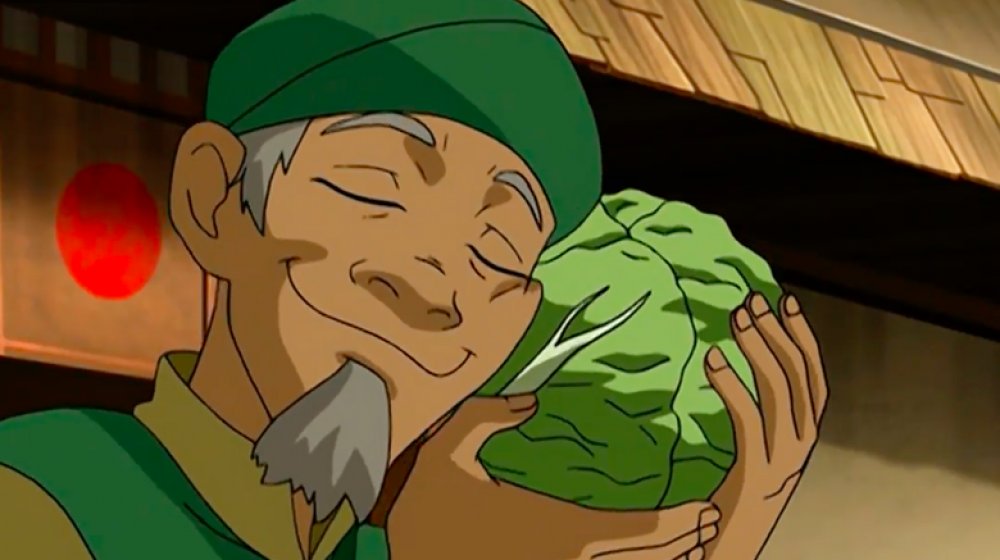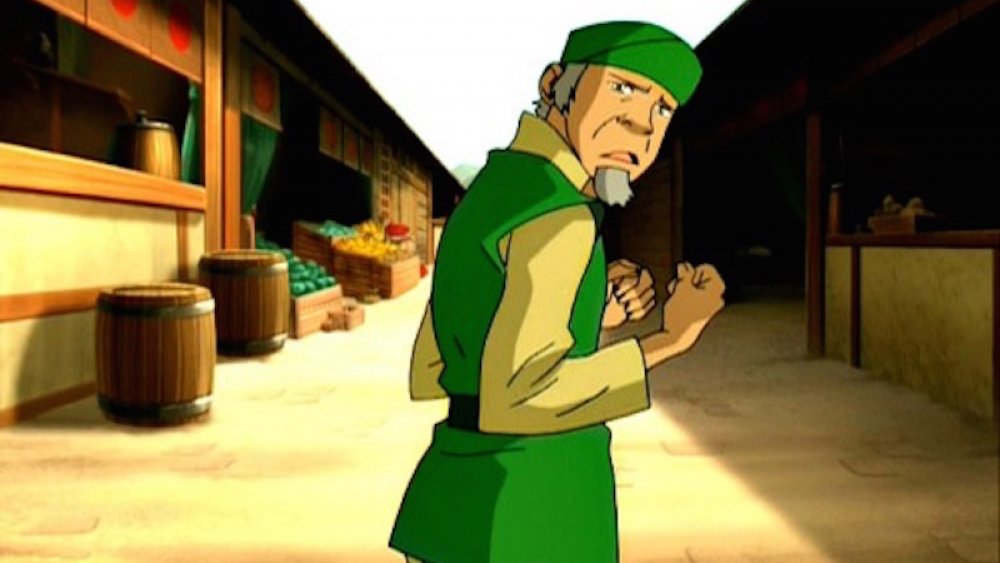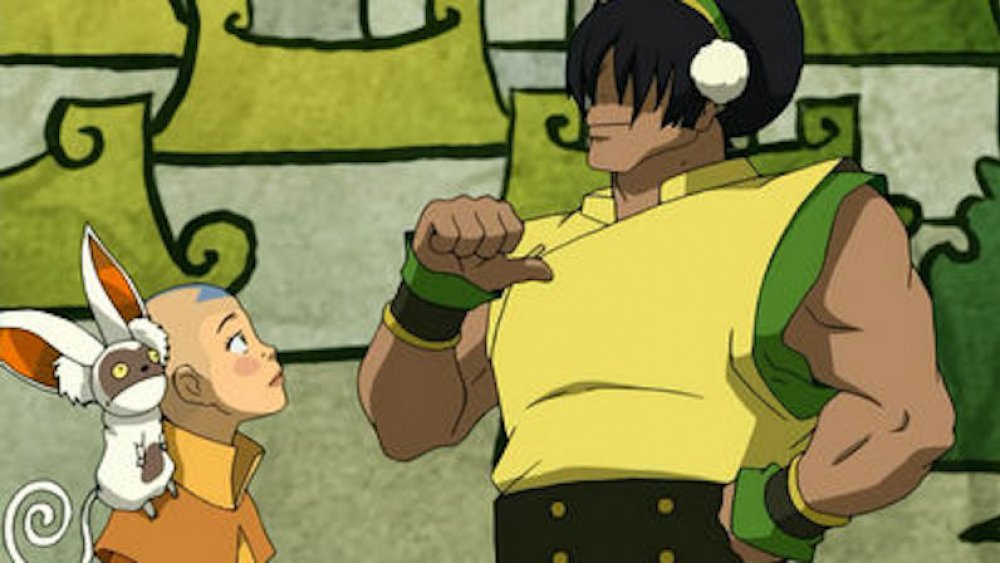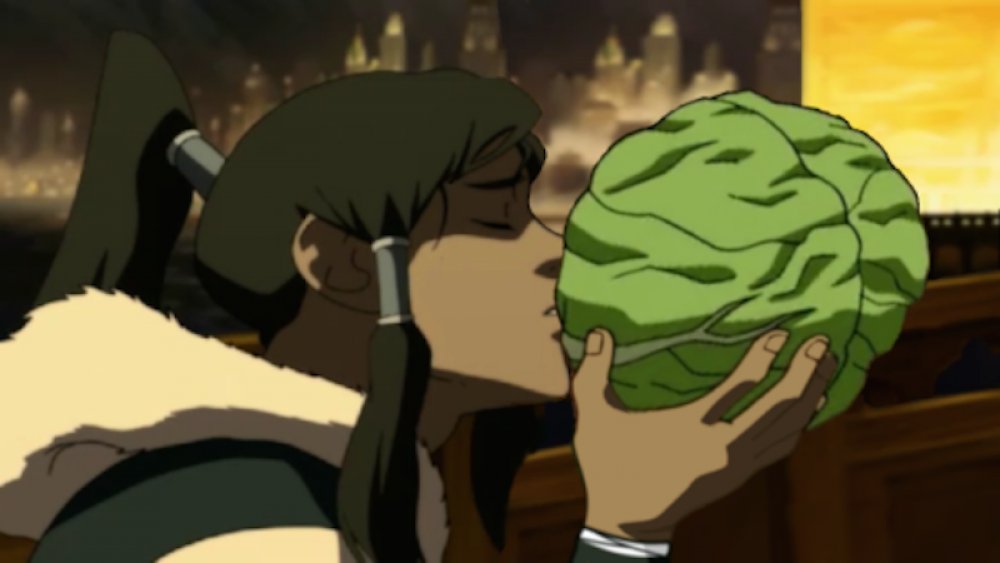The Truth About Avatar: The Last Airbender's Cabbage Merchant
Nickelodeon's Avatar: The Last Airbender is one of the most complete and satisfying stories told in any medium, for any audience — full stop. Even 15 years after the animated series' 2005 debut, Bryan Konietzko and Michael Dante DiMartino's 60-episode magnum opus withstands the test of time, as evidenced by the fact that the series is enjoying new life as a consistent top-ten streaming selection on Netflix. Much of the show's appeal derives from the diverse cast of dynamic, complicated characters. Even though the series is ostensibly intended for kids, Avatar treats its characters — heroes and villains, both — with more empathy and sophistication than most popular television series aimed at adults.
As a result, it's difficult to pick favorites from Avatar's stellar cast, but there is one character who stands out from the pack for his impact on the story and well-cultivated air of mystique. He is a character so nuanced in his development and critical in his function as witness to history that he is known by no name, only by his profession. We are speaking, of course, of the noble cabbage merchant.
As a new generation of fans discovers Avatar on Netflix — and old fans get a chance to revisit — the show's iconic purveyor of Brassica is sort of having a moment. At the highest level, Avatar tells an epic story of the titanic struggle between Avatar Aang (voiced by Zach Tyler) and Fire Lord Ozai (Mark Hamill). With the stakes so high in the foreground, it can be easy to overlook the cabbage merchant and all his meaningful contributions, so let's set the record straight for posterity.
Avatar: The Last Airbender's cabbage merchant outgrew his intended role
Slate was perhaps the earliest outlet to jump on the cabbage merchant bandwagon when it published an article celebrating his oft-overlooked contributions. In that piece, the magazine interviewed both the writer and voice actor responsible for bringing the cabbage merchant to life.
Staff writer John O'Bryan claims personal responsibility for this one sterling act of creation. He penned the season 1 episode "The King of Omashu," wherein the cabbage merchant makes his very first appearance. In that episode, Aang discovers that his childhood friend, Bumi (Kevin Ng), is still alive and the current reigning king in the Earth Kingdom city of Omashu. During one frenetic action sequence, the cabbage merchant wanders into the scene only to see his entire wagonload of cabbages destroyed by Team Avatar (accidentally, of course). Little did voice actor James Sie know at the time, but his tortured exclamation, "My cabbages!" was about to become one of the most memorable catchphrases in all of Avatar lore.
According to O'Bryan and Sie, the cabbage merchant was originally intended as a one-off gag. In storytelling, however, characters often take on lives of their own. After that one quick appearance in "The King of Omashu," it became clear that the cabbage merchant still had an important role to play.
Avatar: The Last Airbender's cabbage merchant is an important primary source
After his debut in Omashu, the cabbage merchant follows Team Avatar on their long journey to the Northern Water Tribe. He resurfaces in the episode entitled "The Waterbending Scroll," wherein an overeager Katara (Mae Whitman) steals a valuable waterbending primer from a group of slightly inept pirates. This episode was also penned by O'Bryan, though the staff writer credits Konietzko with the decision to bring the cabbage merchant back for a second round. During "The Waterbending Scroll," the merchant's cabbages are once again destroyed, and thus a running gag is born.
The cabbage merchant's story intersects twice more with Team Avatar's quest during season 2. The team first finds him at the ferry station, where his entire cabbage crop is discarded by customs. He turns up again in the Earth Kingdom capital of Ba Sing Se only to lose his cabbages for the fourth and final time.
Why no season 3 appearance? For one thing, season 3 takes place largely in the Fire Nation, and the cabbage merchant very clearly hails from the Earth Kingdom. At the time of Avatar season 3, no self-respecting Earth Kingdom grocer would be caught dead selling his wares inside the boundaries of the Fire Nation. He does, however, get a critical shout out during "The Ember Island Players," a fun season 3 episode wherein Aang and company take in a theatrical performance dramatizing their own lives. The playbill lists a "surprisingly knowledgeable purveyor of cabbages" as one of the playwright's most valuable sources.
How does the cabbage merchant's story end on Avatar: The Last Airbender?
While the reference during "The Ember Island Players" is, perhaps, a fitting valediction for the cabbage merchant, we do get some additional clues as to how his story ends. Since his wares have been repeatedly destroyed, one might assume that he finds himself destitute by the end of Avatar season 3. If that were the case, poverty might also serve as a secondary explanation for his conspicuous absence during the series' final arc. Fortunately, we have reason to believe that the merchant's business no only survived its four encounters with the Avatar, but went on to thrive.
In the successor series, The Legend of Korra, we get a quick glimpse of much more industrious cabbage seller in Republic City. Since Legend of Korra takes place a full generation after Avatar: The Last Airbender, this vendor can't possibly be the same merchant, but he is very likely one of his descendants. After Korra lays waste to his own commercial operation, he emits a familiar exclamation, "My Cabbage Corp!" This one line suggests that the cabbage merchant from Avatar rebuilt his entire business, industrialized, and incorporated, leaving a thriving commercial cabbage operation behind for his heirs to operate in perpetuity. We like to think he used his consulting fees from the Ember Island play as seed capital to set up shop in the Fire Nation colony that would eventually become Republic City.
One can only hope we'll get some confirmation of this theory in Netflix's upcoming live-action adaptation of Avatar: The Last Airbender.



